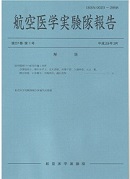巻号一覧

49 巻 (2009)
- 4 号 p. 59-
- 3 号 p. 45-
- 2 号 p. 13-
- 1 号 p. 1-
49 巻, 4 号
選択された号の論文の1件中1~1を表示しています
- |<
- <
- 1
- >
- >|
-
高田 裕子, 久田 哲也, 本橋 清, 小林 拓輝, 桑田 成雄, 竹内 由則2009 年 49 巻 4 号 p. 59-67
発行日: 2009年
公開日: 2020/04/11
研究報告書・技術報告書 オープンアクセスSpatial disorientation (SD) remains one of the flight safety problems in the Japan Air Self-Defense Force (JASDF). In JASDF, only the students in the flight preparation course undertake the routine SD training using the Spatial Disorientation Trainer (SDT) (GyrolabTM Model GL-4000). Safe and effective on-ground SD training is a desired countermeasure against SD accidents. Previous reports have suggested that the simulation of past severe SD accidents or incidents may be more effective for this SD training, particularly for refresher training of experienced pilots. In this study, we re-created the known flight conditions of a past severe SD incident in a training profile using the SDT and assessed the students’ responses compared to standard SD training profiles based on illusion types in order to confirm which method led to more effective SD training. Seven fighter training pilots participated in this study. Subjects experienced training profiles including; a) typical illusion profiles and b) simulation of an actual severe SD incident. This simulation is based on a past severe SD incident we previously reported. In that severe SD incident profile, trainees experienced up to 3G with an audio recording of the incident cockpit sounds. The subjects answered questions about these SD profiles regarding the pilot-evaluated effectiveness and subjective impression with a 5-point scale: 0 (no effectiveness) to 4 (very effective) after experiencing both the standard illusion-based profiles and the simulated SD incident. The results show that the pilot-evaluated effectiveness of the simulated SD incident profile was 4.0±0.0 for the basic fighter training course, the highest value of the all profiles. The score regarding subjective impression for the simulated SD incident profile was also the highest value 4.0±0.0 of the all SD profiles. These results suggest that SD training profiles based on actual severe SD incidents may be a more effective method for the basic fighter training course than typical illusion-based profiles.抄録全体を表示PDF形式でダウンロード (1013K)
- |<
- <
- 1
- >
- >|